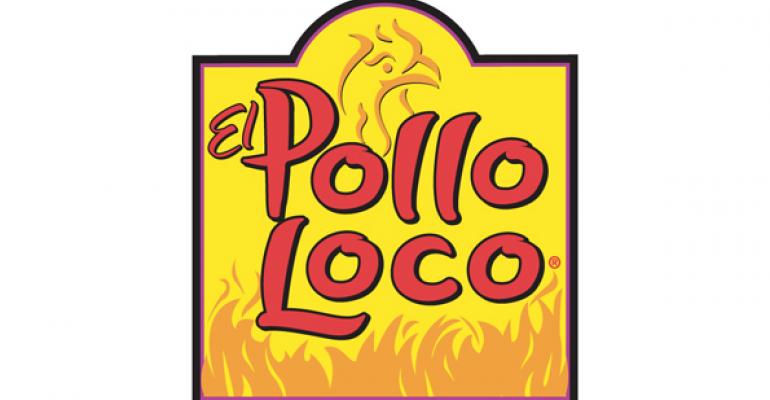After spending several years staging a turnaround, the private-equity owners of the El Pollo Loco grilled chicken chain are now eyeing an initial public offering.
The Wall Street Journal reported news of the planned IPO by El Pollo Loco Holdings Inc. on Thursday. Other sources close to the situation also confirmed that the Costa Mesa, Calif.-based chain is prepping for an IPO, though the timing and other details remain unclear.
Officials with private-equity firm Trimaran Capital Partners, which acquired a controlling stake in El Pollo Loco in 2005 for $415 million, did not respond to requests for comment.
RELATED
• El Pollo Loco names Larry Roberts CFO
• El Pollo Loco moves toward 'QSR plus' positioning
• More restaurant finance news
Additionally, Mark Hardison, El Pollo Loco’s vice president of marketing, said Thursday that the company “has nothing to report at this time.”
In a recent interview with Nation’s Restaurant News, however, Ed Valle, El Pollo Loco’s chief marketing officer, outlined how a brand restaging over the past two years has moved the 401-unit quick-service chain into more of a “QSR plus” positioning that leans toward fast casual.
“It’s the food of fast casual with the speed and convenience of QSR,” said Valle. “We’re riding this macro theme of mainstream foodies that have become educated by the Food Network and the Chipotles of the world. They want better-quality restaurant food, but they want it on their terms.”
After years of struggle through the recession, the chain has emerged with renewed strength. Valle said same-store sales rose 9.9 percent in 2012, and momentum continued into 2013, though he declined to give sales numbers.
“We had continued strong growth through 2013, and that’s why we’re sticking with this strategy,” he said. “We’re feeling very good about this brand.”
El Pollo Loco began as a roadside chicken stand in Guasave, Mexico in 1975. In 1980, the concept arrived in Los Angeles. The concept grew in popularity as an alternative to fried chicken and was known for its citrus-marinated grilled chicken, which was the centerpiece of the family-focused combination dinners featuring bone-in chicken pieces with side dishes. The grilled chicken was also the primary protein in the chain’s lineup of burritos, tacos and salads.
After taking a controlling stake in the chain in 2005, Trimaran announced plans in 2006 for an IPO, looking to raise up to $135 million. But the plan was withdrawn later that year, blaming unfavorable market conditions.
In 2007, private-equity firm Freeman Spogli & Co. invested $45 million for an undisclosed stake in El Pollo Loco Inc. to help accelerate expansion.
But the recession took a toll on the quick-service brand, especially in its core market of Southern California, where unemployment rates were high, particularly for Latinos. The brand relied heavily on discounting, at one point offering a 12-piece chicken dinner for $12. El Pollo Loco’s same-store sales plummeted by double digits, and recovery was slow.
Staging a turnaround
(Continued from page 1)
For the 12 months that ended March 30, 2011, the end of the company’s first quarter that year, El Pollo Loco reported a net loss of $38.6 million, according to prior financial disclosures because of once-public debt. Later that year, however, the parent company EPL Intermediate Inc. refinanced its publicly traded bonds with private debt and an unspecified investment of capital from existing equity sponsors.
The refinancing paved the way for El Pollo Loco to work on revitalizing the brand, and 2012 was dubbed a “year of transformation.” Part of that effort included the development of a new “Hacienda” prototype design, with an open kitchen and grills front and center, so guests could see the handcrafted nature of the grilling process.
Valle said about 136 locations now have the new look and, though he declined to specify the sales lift, those units are averaging higher sales than traditional locations.
The more contemporary look also matched a vastly upgraded menu, with items like a chicken, bacon and guacamole-stuffed quesadilla, and lower-calorie grilled tostadas with house-made mango salsa.
“But we wouldn’t have been able to get into the Mexican entrée business unless we restored the value of our chicken,” Valle said.
The bone-in chicken combo meals are still top sellers, but the chain has entirely eliminated discounting, he said. Instead, El Pollo Loco appeals to value-focused customers with offers like a three-course family meal with eight pieces of chicken, sides, a Mexican Cobb salad and churros for $20.
The average check at El Pollo Loco is $10.25, combining lunch and dinner.
Roughly 56 percent of El Pollo Loco’s 400 units are franchised, and most of them are in Western states. For 2014, the company expects 17 new restaurants to open, including 11 company-owned locations and six franchised units. By comparison, the chain opened seven new restaurants in 2013, including five franchised units and two company-owned locations.
Valle said the concept is ready to push further east, though the plan is to continue to grow in existing markets. Generally, El Pollo Loco looks for freestanding suburban locations with drive thrus, but, Valle said, “As we look to the future, we will look at different formats.”
Valle declined to share systemwide sales results. According to the Wall Street Journal, the chain has debt of about $305 million and generated annual revenue of about $307 million for the year ended June 26, 2013.
El Pollo Loco will be the third restaurant chain to make a move toward an IPO this year.
Earlier this month, Papa Murphy’s Holdings Inc., parent to the Papa Murphy’s Take ‘n’ Bake Pizza chain, filed for an IPO with the goal of raising $70 million.
That filing came just days after an IPO filing by Zoe’s Kitchen Inc., parent to the fast-casual Zoës Kitchen chain, which is seeking to raise $80.5 million.
Contact Lisa Jennings at [email protected].
Follow her on Twitter: @livetodineout




